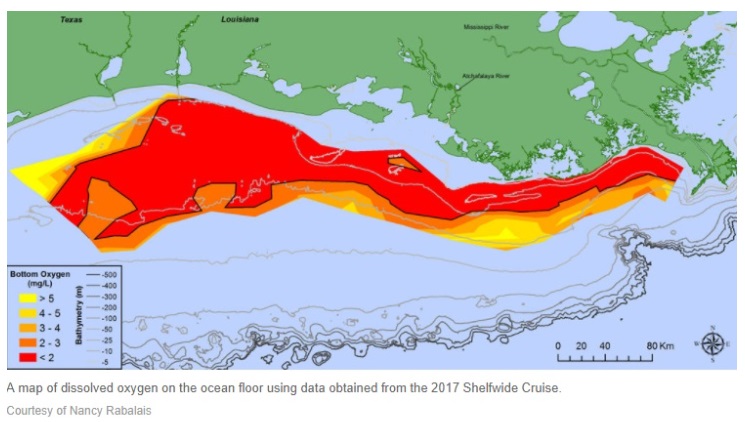CC&E Researchers Receive $1.5 Million to Study Effects of Climate Change on Fish in Hypoxic Zone
December 01, 2023

Department of Oceanography & Coastal Sciences (from left): Associate Professor Junhong Liang, Professor Nancy Rabalais and Assistant Professor Cassandra Glaspie
BATON ROUGE - The effects of the Gulf of Mexico Dead Zone are well documented—marine life struggles to survive in the low-oxygen waters created by excess nutrients streaming into the Gulf of Mexico from the Mississippi river.
Now, a changing climate and warming ocean waters may compound the effects of this hypoxic zone, and a team of CC&E researchers is trying to determine what the impacts might be.
Department of Oceanography & Coastal Sciences, or DOCS, Associate Professor Junhong Liang, along with DOCS Professor Nancy Rabalais and Assistant Professor Cassandra Glaspie, has received a new, $1.5 million grant from NOAA for a project intended to study the biological vulnerability to hypoxia from climate warming and eutrophication in the northern Gulf of Mexico.
“This project will give us a much-needed window into how climate change will be affecting marine life in the Northern Gulf of Mexico,” Liang said. “It will generate the data and theoretical framework that form the scientific basis for policy makers and natural resource managers to devise effective nutrient reduction strategies and sustainable resource management plans.”

"This collaborative effort… will provide our partners critical information on how current and future climate warming may alter essential habitat and low oxygen tolerance for key species, such as brown shrimp, red drum, and red snapper, " said Melissa Baustian, an ecologist at US Geological Survey, who is also working on the project.
Rabalais said the grant provided an opportunity to delve into the interplay of environmental and biological factors in fish in the hypoxic zone.
“It is difficult to untangle multiple stressors on an aquatic organism,” she said. “Temperature and dissolved oxygen go hand-in-hand, but not always in the same direction. As temperature goes up, the amount of dissolved oxygen in the water goes down.”
“However,” she continued, “Fish and other marine animals need to consume more oxygen in warmer waters.”
“Altogether, this can lead to a compounding effect, “ Liang, who holds a joint appointment at the Center for Computation and Technology, said. Warmer temperatures mean fish already stressed by hypoxic conditions may need to consume even more oxygen at a time when water may contain less dissolved oxygen overall. It’s difficult to predict what the effect of all these changes will be, he continued.
The grant will contain two parts: first, the researchers will use computer models to project ocean warming and future water quality conditions in the area, and measure how marine species respond to those projected changes in the lab. They will use those data to paint a detailed picture of the conditions created by hypoxic stressors and warming waters—something that hasn’t been done in this way before.
Then, they will predict the impact of those stressors on important species of fishes that make the Gulf their home – species like the Atlantic croaker, the southern flounder and the red snapper.
The final goal of the project is to develop an ecophysical framework for important species in the Northern gulf, and apply it to temperature dependent habitat shifts and body size shrink to those species for the next few decades.